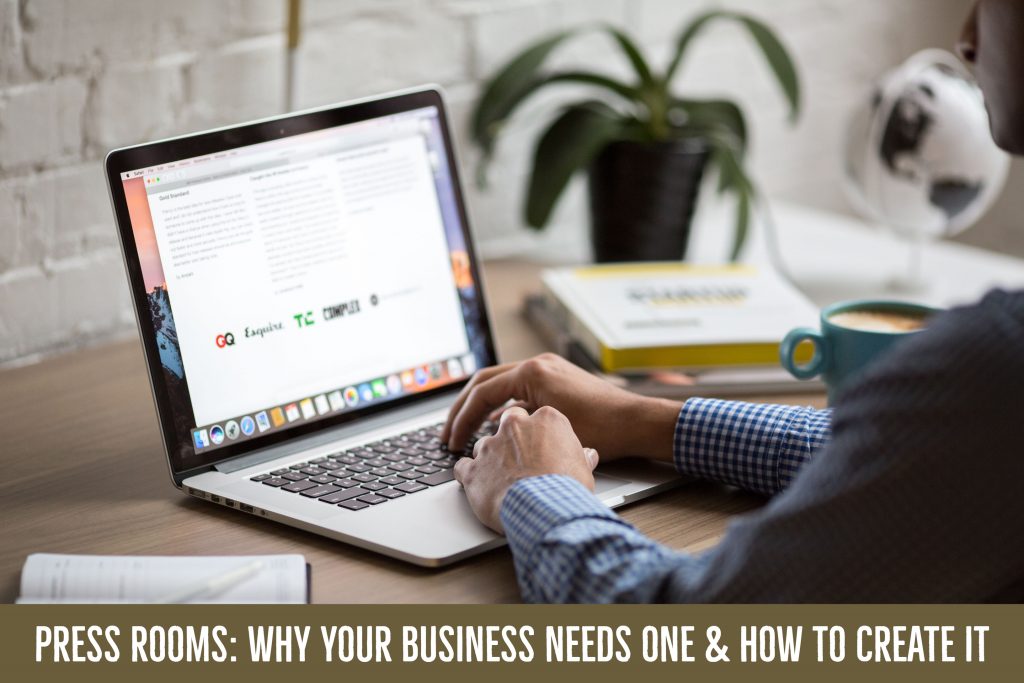Why your business needs a press room, and how to create one

How many times have you gone online to research a prospective client’s organization only to find yourself mired in promotional gobbledygook that fails to clearly state what the organization does?
Now, put yourself in the shoes of an enterprising journalist under the gun on a rapidly-approaching deadline. Imagine how they must feel while slogging through materials laced with trade jargon, especially if they aren’t familiar with your industry.
That raises an even more basic point: where, on your website, do journalists go to find out the most basic information about you and your organization?
Do you have a press room clearly marked? Or do journalists have to scour your site to find it? And, once they’ve found your press room, what’s in it?
Do you even have a press room?
Press rooms contain the basics
At Wellons Communications, we organize press rooms under the premise that they cannot be too simple.
We approach their development with the same mindset as a journalist: who, what, when, where, why and how.
Like Jack Webb in the now-ancient television series Dragnet, we stick to the facts, ma’am. We put the answers out there as plainly and simply as possible.
Why the simplicity in press rooms?
The information in press rooms is basic for the simple reason that journalists often want the simplest possible explanation to extract and convey to their audience. This is particularly important if a journalist is on deadline or unfamiliar with your organization or industry.
Another important reason simplicity is paramount in press rooms is that you control the information being conveyed. Or, to say it another way, by making the answers available before the question is asked, you have made it as easy as possible for the journalist to say about you what you say about yourself.
This does not mean that you use over-the-top hyperbole. It means you boil your elevator speech down to a phrase or a few well-chosen words that will accurately and clearly tell people who you are and what you do.
What do you put in a press room?
No two press rooms are exactly alike, but there are basic elements that should serve as a foundation. These include:
- Copy blocks, in varying length, that allow journalists to cut and paste information (a big help if they are on deadline). The blocks can range from 25 to 100 words in length and should include your website address. The purpose of the copy blocks is to define who you are, what you do, and how to get more information about you.
- A fact sheet that provides the 5 W’s and H in succinct phrasing that can be adopted for use by journalists. The fact sheet should be free of hyperbole and contain only relevant factual information that is important to you, your industry, and your clients.
- An undated overview release that provides a basic introduction about your organization. Keep it short (two pages max) and readable. The key element is to keep the release undated and limited to information that will not change very often.
- Recent news. Include a list of the most recent press releases in chronological order. This allows journalists to see what you’ve been saying.
- Press contact. Who should journalists call for more information? Name, phone number, email address and any other relevant information should be included. This should be one page, no more, and easy to find.
- Graphics. It’s always nice to include a downloadable logo, photos, and a short video (:20 seconds is plenty).
Let media know you have a press room
The fact that you even have a press room provides a legitimate excuse to contact media and let them know that a) you exist and b) you are a readily available source of information for your organization, your industry, and any related topics that might be important to the media.
You can communicate this via an email, or you may want to go a little further and send the information out via some memorable tchotchke that will linger on a journalist’s desk and have a lengthy life span (i.e. a magnetic bookmark, a mousepad, pen cup or magnetic calendar).
If you are on a tight budget (who isn’t?), create two levels of tchotchkes: a more expensive tchotchke for your A-list media and a less expensive notification for everyone else.
So how do you create a press room?
We’re glad you asked. That’s what we do.
We are experienced and knowledgeable in developing and maintaining press rooms. That’s because we’ve been on the other side (the journalist’s side) combing through the web (and everywhere else) seeking information necessary to create a story about something that we just learned was important.
We know what journalists want and how to format a press room that meets their needs.
If your press room needs updating – or if you simply need a press room for the very first time – call on us.
We will be happy to look over what you have in mind—or even recommend what you need—and furnish you with a press room that will be valuable to you and the media you want to reach.
